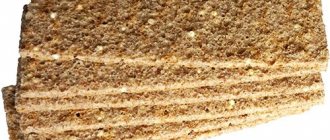Edited by an expert:
Nadezhda Primochkina, nutritionist - 05.29.2021
Looking slim and not being overweight is very fashionable. Therefore, many people who are unable to use traditional methods for losing weight are trying to find alternatives. One of them is chewing gum for weight loss. But is it possible to lose weight with its help? Let’s try to figure it out below.
Chewing gum composition
Each manufacturer adds certain components to the chewing gum that are responsible for individual differences and give the product specific taste qualities. However, the main components of all chewing gum are the same.
Rubber base
The rubber base consists of:
- Elastomer;
- Smol;
- Wax.
The hydrophobic food polymers included in the composition prevent the dissolution of chewing gum in the oral cavity. At the same time, this quality allows the chewing gum to come into contact with oily surfaces.
Sweeteners
It is these components that are among the most controversial when it comes to the pros and cons of chewing gum and the dangers of chewing gum for children. In this regard, let us consider this component of the product in more detail.
Sorbitol (sorbitol)
In the composition, this component is also designated E420. Negative consequences for the body arise from abuse of sorbitol and include the development of:
- Diarrhea;
- Increased gas formation, and, as a result, irritable bowel syndrome;
- Fructose malabsorption.
Maltitol
The second component designation is E965. In case of overdose, it can have a laxative effect. However, it is worth noting that this sweetener has lower calorie content than sugar and does not lead to the destruction of tooth enamel.
Mannitol
Refers to sugar alcohols and has the designation E421. It has a lower glycemic index than sucrose and poor absorption in the intestine. It may have a laxative effect and has a masking ability in relation to other drugs. Contraindicated in case of a history of heart failure.
Aspartame E951
As a sweetener it is 200 times superior to sugar. When ingested, it breaks down into methanol and amino acids, which, when consumed in large doses, can provoke negative consequences. Has contraindications.
Acesulfame E950
In its separate state it has a pronounced specific taste, which is why it is used as a combined additive.
Xylitol E967
It is a complete sugar substitute that does not have a negative effect on tooth enamel. It must be taken into account that when consumed in large quantities it can have a laxative effect. In addition to the listed components, or as an alternative to them, sugar and glucose syrup can be used.
Emulsifiers
This type of substance is necessary to create homogeneity and give the necessary viscosity to the product.
Glycerin (E422)
Not only provides viscosity, but also functions as a teeth-safe sweetener.
Lecithin (E322)
It is made from soybean oil and is considered a non-toxic substance that is easily excreted from the body. Essential to reduce viscosity, which prevents sticking.
Acidity regulators
Citric and malic acids are most often used for these purposes. As components of natural origin, they are considered harmless additives. It must be taken into account that in case of abuse, they can have an irritating effect, including the development of pain, coughing and vomiting with blood.
Dyes
To give chewing gum the required color, calcium carbonate (E170) and titanium oxide (E171) are most often used. When consumed in small quantities, both components are considered safe for health. With significant overdoses, calcium carbonate can provoke the development of milk-alkali syndrome, which carries serious danger, including death.
Thickeners
To thicken the raw materials used in the manufacture of chewing gum, Arabian gum (E414) is used. It is a component of natural origin that is not harmful to health.
Glazing agents
Palm (carnauba) wax is used to give an aesthetically attractive coating to the surface of chewing pads. In the composition, this component may be designated E903. Non-toxic component of plant origin.
Antioxidants
The substance hydroxyanisole (E320) used as a preservative is permissible for use only in extremely small quantities. Uncontrolled consumption in large quantities can lead to extremely negative consequences.
Having examined the composition of the product in more detail, you can answer questions about the advantages of chewing gum and the benefits of chewing gum for humans.
The benefits of chewing gum for humans
The benefits of chewing gum for humans, and in particular for teeth, are the following advantages:
Intense salivation
Human saliva has an alkaline composition that can neutralize the acidic environment that forms in the oral cavity. Increased salivation allows not only to restore the acid-base balance, but also to better eliminate food particles.
Cleansing effect for teeth
The benefit of chewing gum after eating lies in its ability to clean off accumulated plaque and pick up small particles of food. In cases where a toothbrush and dental floss are not available, chewing gum can partially perform their functions and provide at least minimal oral hygiene.
Effect of training
In the process of chewing gum, the ligamentous apparatus of the jaws is strengthened. In addition, chewing gum has a massaging effect on the gums, improving blood circulation.
Fighting seasickness
Many people suffer from poor travel tolerance, both by water transport and by all other means of transportation. One of the most unpleasant symptoms of such intolerance is stuffy ears and nausea. In many cases, chewing gum helps to minimize these unpleasant sensations, and sometimes completely eliminates them.
Relaxation effect
Neurologists have noted that chewing gum helps you relax, cope with obsessive thoughts and minimize the negative consequences of stressful situations;
Stimulation of gastric juice production
The benefit of chewing gum after eating also lies in the fact that the chewing process stimulates the secretory and motor functions of the intestines. In addition, the stomach produces gastric juice and enzymes more actively. In combination, these processes lead to better digestion of food and acceleration of metabolic processes.
Despite a fairly large number of positive aspects, the possible harm of chewing gum to humans .
A lot of bubblegum out of nothing
In practice, the scheme for distributing chewing gum for weight loss already raises enough questions for one to be tempted to compare it with a bright and spectacular bubble gum bubble. Functional chewing gum is a typical multi-level marketing product. Remote sales, hypnotically bright advertising with testimonials from happy people who have lost weight, dizzying promises, telephone operators proficient in “live bait fishing” techniques: you just need to place a request for one pack and you become the proud owner of five (and a bonus feeling of conviction that you’ve saved a lot !).
Chewing gum for weight loss, according to good tradition, is advertised as “the secret means of slimming celebrities,” but the product sold in Russia is not produced in Hollywood or even in China, but in confectionery factories near Moscow. True, this fact does not affect the cost of chewing gum in any patriotic way. As of the end of 2014, one package of chewing gum for weight loss, in which 15-20 small peas roll freely, was offered for sale for almost 1 thousand rubles.
The amount is significant for most residents of our country, especially considering what we are talking about. Professional doctors are called upon to help make the right choice and convince consumers of the exceptional effectiveness of chewing gum, whose expert opinions are generously published by websites that sell gum. True, there is one “but”: images from foreign photo banks are used as photos of Russian doctors; Non-existent medical and scientific institutions and fictitious positions are indicated.
Positive reviews from lucky people who lost weight only because they chewed a piece of mango-flavored bubble gum half an hour before a five-course meal also do not stand up to even superficial analysis. They are of the same type and monotonously repeat the same message, the purpose of which is to make you buy at least a package out of curiosity or despair. And while it works, bubblegum bubble sellers have something to put on their bread.
Chewing gum is harmful to humans
The harm of chewing gum to the human body consists of the following disadvantages:
Development of dysfunction of the stomach and duodenum
Prolonged chewing of gum, especially if it occurs on an empty stomach, can lead to excessive production of gastric juice, which can trigger the development of a number of serious diseases of the gastrointestinal tract.
Periodontal depletion
Development of “fatigue” of the periodontium, which is not designed for constant loads;
Disruption of the normal functioning of the ligaments and muscles of the jaws
Overwork of the jaw muscles and ligaments occurs. The consequence of such overload of the ligamentous apparatus can be headaches.
Thinning tooth enamel
Continuous friction sooner or later leads to abrasion of the contacting surfaces.
Damage to dental structures and fillings
Chewing gum can cause damage to filling material and orthodontic structures (bridges, crowns, etc.), loosening them.
Visual facial changes
Frequent and prolonged chewing of gum can lead to disturbances in the proportions and symmetry of the face due to unilateral muscle enlargement. In addition, frequent chewing movements provoke the formation of wrinkles.
Negative effects on memory and ability to concentrate
Chewing stimulates the supply of brain signals aimed at functions associated with the digestion process, accordingly distracting the brain from other activities.
Ingestion of bacterial plaque accumulated on the surface of the chewing gum
This aspect can lead to diseases of the digestive system.
Special attention should be paid to the harmful effects on the human body caused by the components that make up chewing gum. Despite the fact that some components are recognized as safe, we must not forget that their overdose can lead to a number of negative consequences. Thus, the taste enhancers contained in sugar can provoke the development of caries, cause allergic reactions and provoke the development of a number of serious diseases.
Particular attention should be focused on the dangers of chewing gum for children . Chewing gum and blowing bubbles from it can lead to serious problems with your bite. And the components included in the composition have an extremely negative effect on the thin tooth enamel of children’s teeth and the digestive system as a whole.
Are there any other benefits from chewing gum?
“Over the last 100-200 years, people have developed a bad habit - “chewing laziness”
. This is a lack of chewing movements, which appears due to the fact that a person eats too soft food that has undergone culinary processing,” says Kuzmina. Such laziness leads to the fact that the gums are not sufficiently stimulated, blood flow in them decreases and inflammatory processes develop. Chewing gum allows you to increase the load on your gums, improve their blood supply and avoid unpleasant consequences.
How long can you chew gum?
Dentists recommend chewing gum for no longer than 5 minutes and only after eating. It is worth noting that chewing gum cannot act as a full replacement for a toothbrush or floss (dental floss). It can have only a minimal cleansing effect and freshen breath. The last point deserves special attention. In most cases, chewing gum does not eliminate bad breath, but only masks it. The cause of odor is most often diseases of the teeth, ENT organs and digestive system. Only eliminating the causes that caused it can truly eliminate an unpleasant odor.
Are all chewing gums good for your teeth?
How to brush your teeth correctly
How often, what to use, and in what mode is it better to brush your teeth? Detailed instructions for children and adults.
Typically, one of two types of sweeteners are added to chewing gum.
Monosaccharides are glucose and fructose
, they are found in honey and fruits.
These substances readily eat bacteria that live in plaque, resulting in the formation of acid that destroys tooth enamel. Sugar alcohols - sorbitol, xylitol
- are found in fruits, berries, seaweed, cauliflower, and mushrooms. Bacteria do not feed on them, so chewing gum with such sweeteners is not dangerous for teeth. Moreover, xylitol can accumulate in bacteria, causing them to die or become idle, thereby protecting the enamel from acid damage. “Xylitol and sorbitol stimulate salivation, which allows for intensive rinsing of the oral cavity,” says Kuzmina, “and xylitol itself is able to facilitate the penetration of calcium into the surface layers of the enamel and strengthens it.”
How to choose a toothbrush
Conventional, electric or ultrasonic? Soft or hard? Synthetic or natural? Accurate answers to all questions.
Therefore, before you put another pad or piece of chewing gum into your mouth, carefully
study its composition
and choose one that contains sorbitol or xylitol.
What can replace industrial chewing gum?
Resin
Resin is a natural substitute for chewing gum. The most commonly used resin is cherry and apple tree, which has a pleasant taste. Coniferous resin has a pleasant aroma, but can be noticeably bitter.
Beeswax
Extremely rich in useful microelements and vitamins. In addition, beeswax and beeswax have good disinfectant and wound-healing properties. However, it must be taken into account that bee products can be quite strong allergens.
Coffee beans
They have abrasive properties, have a slight antibacterial effect and mask many unpleasant odors well. In addition to the above, coffee has an invigorating and tonic effect.
Mint and parsley
Rich in essential oils and vitamins. They can not only eliminate unpleasant odor, but also give a temporary feeling of fullness.
Homemade chewing marmalade
It’s not difficult to prepare this healthy delicacy using fresh fruits and berries.
The benefits and harms of chewing gum: conclusion
Thus, having considered all the pros and cons of chewing gum , we can come to the conclusion that using it within reasonable limits and in accordance with the recommendations of doctors will not harm and can even bring some benefit. But do not forget about contraindications. When choosing chewing gum, you must give preference to reputable manufacturers and pay close attention to the composition of the product. Particular caution when using chewing gum should be exercised by people with diseases of the oral cavity and digestive system, pregnant and lactating women and children.











